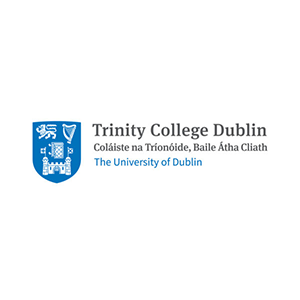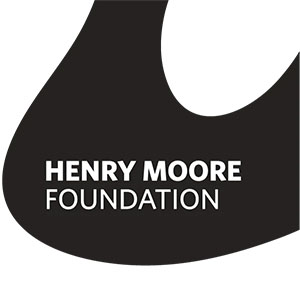Penelope Curtis
Dr. Penelope Curtis studied Modern History at Corpus Christi College, Oxford (1979–1982) followed by a Masters and PhD on French sculpture after Rodin at the Courtauld Institute of Art (1983–89). Since 2015, Dr. Curtis has served as Director of the Calouste Gulbenkian Museum in Lisbon. She ran the Tate Britain as Director from 2010 to 2015, and oversaw a number of successful exhibitions, along with the revamped Tate Britain in 2013, including the critically acclaimed rehang of its collections. She was chair of the jury for the Turner Prize. Prior to her to Directorship of Tate Britain Penelope Curtis was Curator at the Henry Moore Institute in Leeds from 1999 where she was responsible for developing an acclaimed and distinctive program of exhibitions, presenting sculpture of all periods. Alongside this she oversaw the development of the Leeds collections along with its research and publishing program, the acquisition of significant works including those by Rodin, Epstein and Calder, and built up a unique archive of sculptors’ papers.
Curtis is an established scholar and author with particular interest in inter-war art and architecture and contemporary art, on which she has written widely for many artists. As an art historian, she is especially known for her work on Barbara Hepworth, about whom she has written a best-selling biography, and for many exhibitions on the materials and meanings of sculpture. Her publications include After Nora is her first novel, and recent books are The Pliable Plane and Scale: Sculpture 1945-2000. Sculpture 1900–1945 in the Oxford History of Art (Oxford, 1999), Patio & Pavilion: The Place of Sculpture in Modern Architecture (Ridinghouse/Getty, 2007), and Sculpture Vertical, Horizontal, Closed, Open (Yale UP, 2017).
Fionna Barber
Dr Fionna Barber is Reader in Art History in the Manchester School of Art and Research Degrees Co-ordinator for Art / Visual Culture. Her research interests are contemporary and twentieth century Irish visual culture, remaking of feminist art history, contemporary women’s painting and a range of issues in twentieth century modernism including Irish modernist women artists, nation, memory and identity and gender performativity and embodiment. She is currently co-editor of the Routledge Companion to Irish Art (forthcoming 2025). Recent research projects include ‘Elliptical Affinities: Irish Women Artists and the Politics of the Body 1985-present’ exhibition curated for Highlanes Gallery, Drogheda, Ireland 16 November 2019 – 26 January 2020. See more details here.
Riann Coulter
Riann Coulter is a curator and art historian whose research focuses on Irish and Northern Irish art. A graduate of Trinity College Dublin (BA) and the Courtauld Institute of Art, London (MA, PhD), she has curated and co-curated over 50 exhibitions for institutions including the Irish Museum of Modern Art, Ulster Museum, National Gallery of Ireland and the F.E. McWilliam Gallery, Co. Down where she has been curator since 2009. She is co-editor with Roisin Kennedy of Censoring Art: Silencing the Art Work, (IB Taurus, 2018) and has contributed to numerous publications including The Art and Architecture of Ireland (Dublin, 2014), Familiar but Unknown: Irish Women Artists (Dublin 2010) Sources in Irish Art 2 (Cork, 2021) and Irish Art 1920-2020 : Perspectives on Change (Dublin 2022). Dr Coulter is the Vice Chair of the Irish Museums Association and has served on the Boards of National Museums NI, the Northern Ireland Museums Council and the Strategic Committee of the Centre Culturel Irlandais, Paris. More details here
Billy Shortall
Dr Billy Shortall is an art historian and a leading scholar on the life and work of Hilary Heron. He is currently Visiting Research Fellow at the Irish Art Research Centre Trinity College Dublin where he is developing an exhibition on the Cuala Industries which will open later this year. His research is focused on the intersection between art and politics in post-Independent Ireland. Dr Shortall’s most recent project involved an online recreation of the 1922 World Congress of the Irish Race in Paris and associated art exhibition which is available at www.seeingireland.ie. More details here
Mary Kelly
Dr Mary Kelly (née Healy) is Lecturer in Modern and Contemporary Global Art Histories, University College Cork, Ireland. She is also a Research Associate at the Centre for Gender and Women’s Studies, Trinity College Dublin. She is an Irish Research Council Awardee and a Fulbright Scholar. Dr Kelly’s publications include: ‘Barjeel Art Foundation: Cross-National Bridge Building and Decolonisation of the History’, Curator: The Museum Journal (2023); “Socio-Political Signifiers and Orientalist Aesthetics: European Women Artists’ Rendering of Objects and Figures in Space” in Lucien de Guise (ed.), Orientalist Paintings: Mirror or Mirage? (Islamic Arts Museum Malaysia, 2022); French Women Orientalist Artists, 1861-1956: Cross-Cultural Contacts and Depictions of Difference (Routledge, 2021); Under the Skin: Feminist Art and Art Histories from the Middle East and North Africa Today (co-edited with Ceren Özpınar, The British Academy with Oxford University Press, 2020). More details here
Seán Kissane
Seán Kissane is Curator of Exhibitions at IMMA and leading curator of the Modern Masters series at IMMA. He describes his practice as ‘curating the edges’, producing deeply researched exhibitions focussed on the work of female and queer artists whose work has been critically neglected. These projects have included major touring exhibitions such as the retrospectives for Derek Jarman, Leonora Carrington, and Mary Swanzy. In 2016 he presented the critically acclaimed ‘Patrick Hennessy: De Profundis’, the first queer reading of Irish modernism. He is currently a PhD candidate at Gradcam, TU Dublin; undertaking research into queer art exhibited in Ireland during and after the Second World War examining how some Irish artists presented divergent images of masculinity that countered prevailing orthodoxies.
Barbara Knežević
Barbara Knežević is an artist working with sculpture, installation and film. Her practice is attentive to how sculptures and other artistic objects engage the body and affect the politics of materials, nationality and ethnicity; historically and in contemporary contexts closely related to her own subjecthood. Materially, her work is comprised of assemblages of objects that are handmade, formed, found, re-purposed or transformed and placed into relationships with one another in exhibition contexts. The method of assemblage extends to her approach to film and moving image where she utilises found, devised and adapted material that together reconsider and revise material and human histories and propose speculative alternative scenarios and relationships to materials, narratives, objects and the past. Her artworks explicate the historical, affective, formal, material, semiotic and political functions of materials and objects through the discourse of sculpture. In 2024 and 2025 Barbara Knežević is engaged in research in the Balkan region concerning the archaeological site of Lepenski Vir and the Iron gates in Serbia towards the production of an artwork titled ‘The Iron Gates.’ Solo and group exhibitions include Pleasure ‘Scapes, RHA, Dublin; Woman in the Machine, VISUAL Carlow; Immurement, STATION Gallery Melbourne; Lithophone, Oonagh Young Gallery, Dublin; The Last Thing on Earth, MAC, Belfast; Exquisite Tempo Sector, Temple Bar Gallery + Studios, Dublin; City Agents, EKKM, Tallinn; Gallery Augusta, Helsinki. In 2025 Barbara Knežević will stage solo exhibitions in Solstice Arts Centre and Sirius Arts Centre. More details here
Niamh O’Malley
Niamh O’Malley is a visual artist. She was born in Co. Mayo, Ireland, studied to PhD, Belfast, 2003 and currently lives and works in Dublin. O’Malley works with moving image alongside sculptural materials including glass, wood, metal and stone. Works gesture towards enabling, offering protection, conveying sensations of touch, and more – of grabbing, holding, caressing surfaces, offering a moment of tether and precarious poise. She represented Ireland at the La Biennale di Venezia, 2022 and recent solo exhibitions include Grimm, New York, (2024), Vardaxoglou, London (2023), Golden Thread Gallery, Belfast, (2023), Temple Bar Gallery & Studios, Dublin, (2023) The Model, Sligo, (2023), John Hansard Gallery, Southampton (2021), mother’s tankstation Dublin (2020), Royal Hibernian Academy, Dublin (2019), Lismore Castle Arts (2019), Grazer Kunstverein (2018), Bluecoat, Liverpool (2015), The Douglas Hyde Gallery, Dublin (2017 and 2015). Selected group exhibitions include Berwick Film & Media Arts Festival; CAG, Vancouver; EVA International, Limerick; Eli & Edythe Broad Museum, Michigan; Irish Museum of Modern Art, Dublin. More details here
Sara Damaris Muthi
Sara Damaris Muthi is a curator and writer, currently the exhibitions Curatorial Fellow at IMMA. Born in Bistrița-Năsăud, Romania and based in Dublin, she has exhibited annual commissions since 2018 with themes ranging from metaphysics to migrant identities. Sara is the recipient of Black Church Print Studio Emerging Curator Award 2022 and Pallas Projects Studios / PVA Writer Award 2023. See more details here
Discussion Moderator
Dr. Angela Griffith
Dr. Angela Griffith is Assistant Professor, Department of the History of Art and Architecture, TCD, and is an art historian who specialises in Irish modern and contemporary art and design. Their research examines the history, contexts, and theories of the printed image in Britain and Ireland from the beginnings of modernist fine art printmaking in the 1850s to contemporary multi-media practices. The most recently the focus is on the contribution of artists to illustration, the private press movement, and limited-edition publishing, c.1910 to 1970. See more details here
Clíodhna Shaffrey
Clíodhna Shaffrey is Director of Temple Bar Gallery + Studios, Dublin. She was part of the curatorial team for Ireland at Venice 2022, the national representation of Ireland at the 59th Venice Biennale. Clíodhna was previously Visual Arts Advisor to the Arts Council of Ireland, and Arts Officer with two local authorities in Ireland. She has worked extensively as an independent curator as well as implementing a diverse range of creative work across curation, policy, and arts planning. More details here


